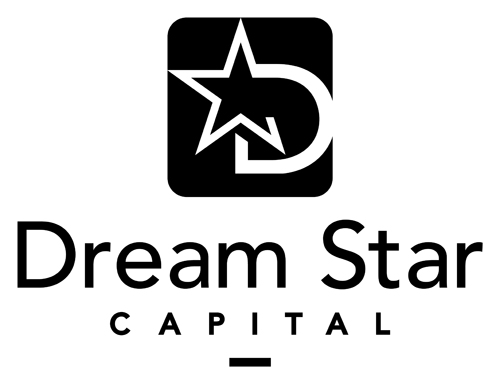Rising inflation, rate increases, and tighter lending restrictions are leading some economists to brace for a recession. The Fed has increased interest rates multiple times this year, with more expected before the end of December. As a result, the 10-year Treasury rate is currently holding at about 3.00 percent. This is where the rate hikes hit commercial real estate (CRE) as most mortgage lenders use this number as a basis for their own rates.
We’re already living with the impacts on the market as a continuing result of the pandemic. Added to that are new economic pressures coming from the conflict in Ukraine. Although it seems far away, the war has strongly affected agricultural exports to the rest of the world. The West’s sanctions against Russian oligarchs have caused ripples. Since many of them own pricey properties in New York, seizures could have a direct effect on CRE in the area.
So how worried do you need to be about your investments in the market? Is it a bad time to be invested in CRE? In this article, we’ll look at current economic conditions, their impacts, and why this might be the right time to purchase commercial real estate. Have we reached a sweet spot in the CRE market? Keep reading to find out.
What’s Happening with Lenders
The rate of mezzanine defaults and loan litigation is up, causing lenders to tighten their purse strings. Other sources of capital are waiting on the sidelines to see what happens in the coming months before committing to funding. Two billion-dollar Commercial Mortgage Bonds were put on hold earlier this year, underlining the shift in debt sales. Where lenders were once eager to extend credit, many are now slamming on the brakes. But this just means acquisition funding requires greater experience in the search, allowing investors with more experienced teams to gain a greater edge.
Pressure on Property
Property owners are feeling the crunch on their ROI. Labor, financing and utility costs cut into monthly profits. Increased costs in labor, supply disruptions, decreased foot traffic, and office vacancy put pressure on tenants. Many companies that leased property are downsizing or closing their doors completely. New tenants aren’t rushing in to fill the gaps, but again, that’s not the whole story.
The Impacts Aren’t Universal
Saying that the CRE market is in trouble is an oversimplification of the issue at hand. Just as not all properties are equal, not every CRE sector is feeling the burn of interest rate hikes. The most impacted CRE appears to be office spaces. Net lease real estate, however, is less susceptible to the same economic pressures. Additionally, not every geographic region is the same. Areas around Minnesota and Missouri, for example, are being hit harder than the Mid-Atlantic states.
It’s important also to remember that our economy doesn’t exist in a bubble. While domestic investors might be holding back, foreign investors are still interested in the market. A potential recession locally doesn’t mean an end to opportunity worldwide. This works both ways too; those looking to buy property in foreign markets won’t have the same pressure. Finding co-investors remains an opportunity to round out a capital stack and could quickly become an even more advantageous strategy in months to come.
Not All Loans Are Equal
Not every loan product will see increased rate hikes either. So far, short-term and adjustable-rate loans are the most affected. Long-term loan products will continue to see lower interest rates. Fixed-rate loans are equally resistant to the Fed’s rate boosts. This is part of the reason it may be a good idea to lock in those rates now before they rise. Previously acquired variable rate loans can be refinanced into fixed terms as well.
There are also other types of financing that are not as closely pegged to the prime rate. For example, consider private lenders offering lines of credit that they service themselves. As they are not bundling and reselling these notes, they remain free to offer any interest rate they like to borrowers. The key takeaway here is that as the lending market changes, the competitive advantage of different lenders and financing vehicles will continue to shift.
Fighting Inflation
Fed policymakers aren’t raising interest rates just to be cruel to investors. Higher interest rates are meant to stave off runaway inflation. Increasing the cost of borrowing chills demand and eventually lowers prices. There are many reasons inflation is bad news for CRE investing. Inflation means materials and supplies cost more. Construction costs rise as a consequence, and the price of property follows. The price of utility increases, cutting into profit.
Inflation erodes consumer purchasing power. Tenants can then afford less, reducing the competitiveness of higher-priced properties. Increased interest rates should slow inflation, normalizing the market.
Finding Solutions
Despite current uncertainty, we aren’t living in a doomsday scenario. It’s still possible to get value from CRE investments with the right combination of strategies. That’s why it makes sense in today’s market to work with a commercial loan broker. Nobody knows how to navigate ups and downs in the financing market better than those who work in the space day in and out. CRE loan brokers. like our team, consistently work on investors’ behalf to find the right money to bring projects to fruition.
Reduced inflation is slowing down price increases. This should make CRE more affordable, even though interest rates are higher. Lower principal amounts will help to offset increased interest rates. A broker will help you qualify for lower-rate loans and move your existing high-cost debt into better, more affordable options. You’ll also get assistance with boosting your business credit score and eliminating debt to attract lenders.
Before you buy commercial real estate, give our loan team a quick call. We are dedicated to helping you pre-position your deal for success.

